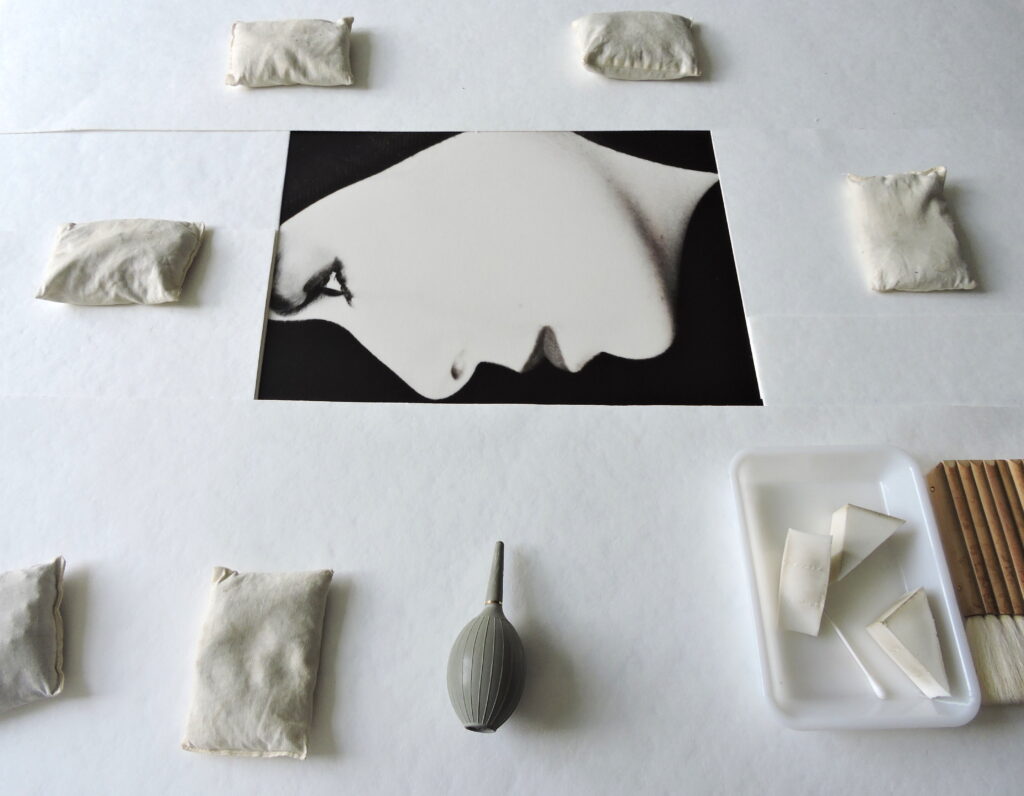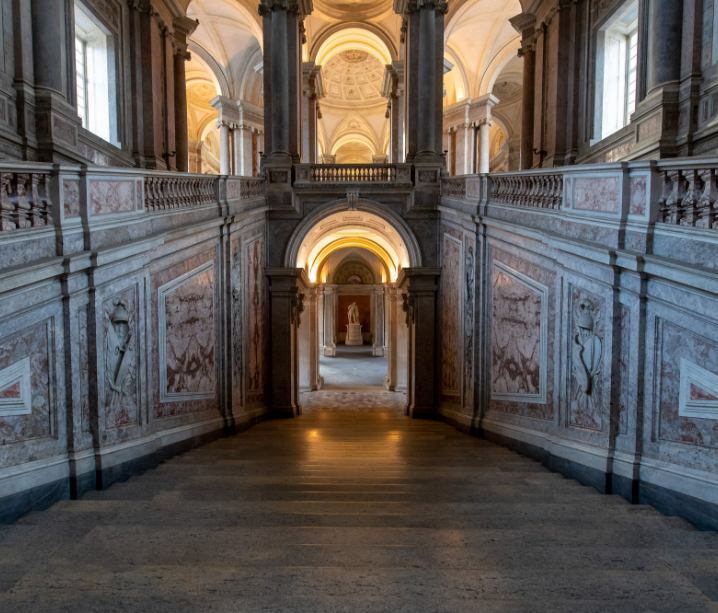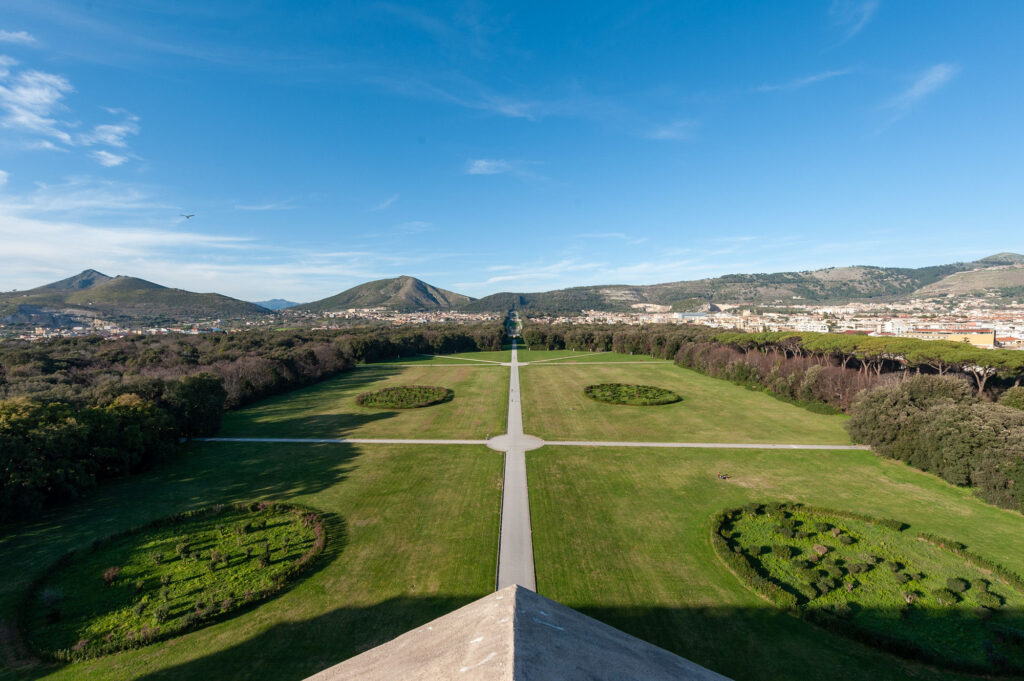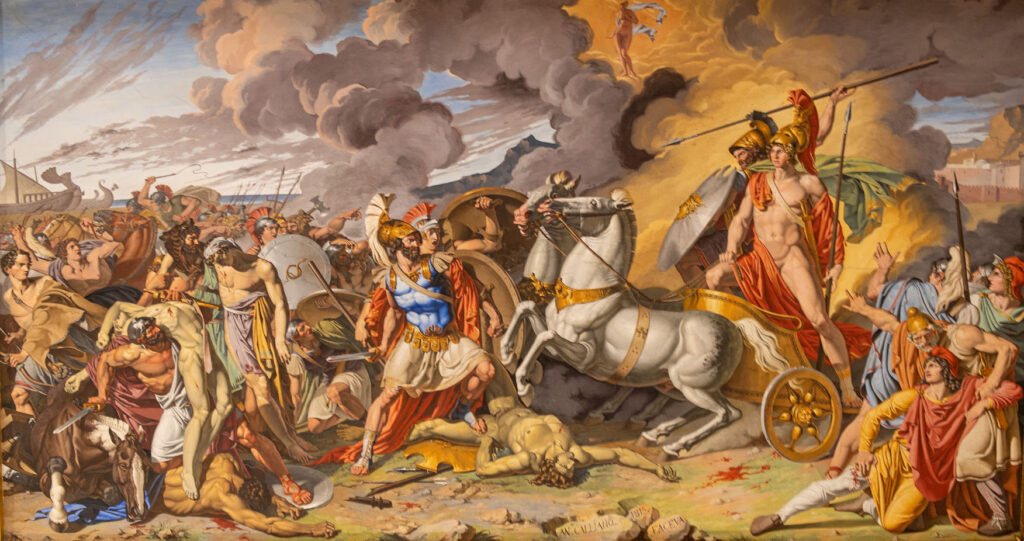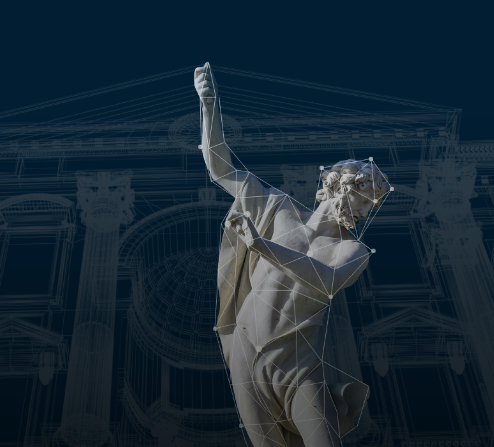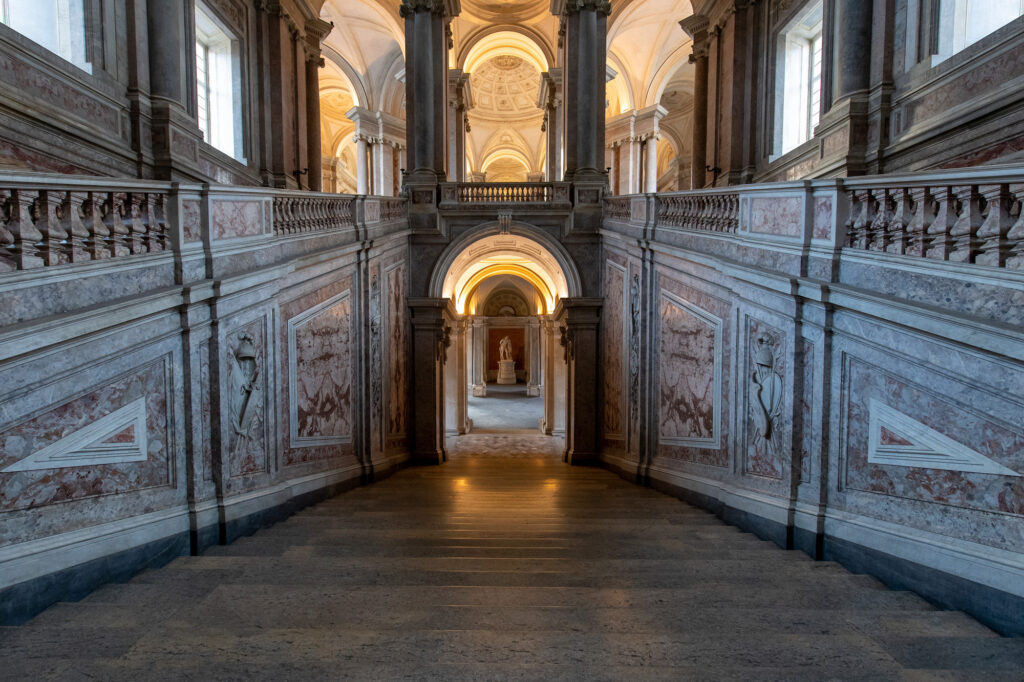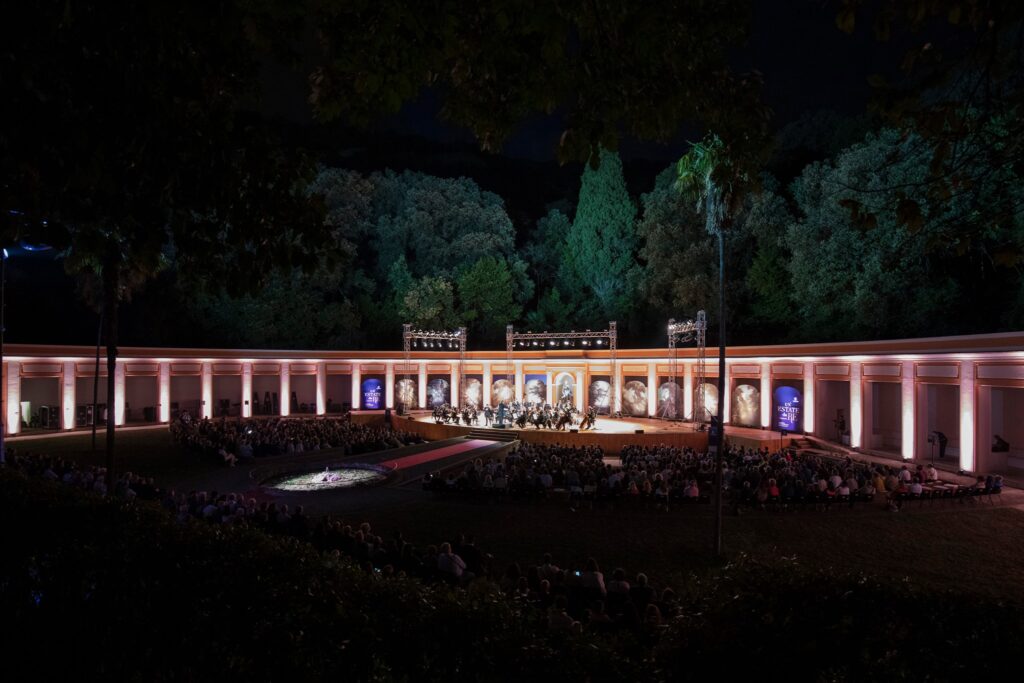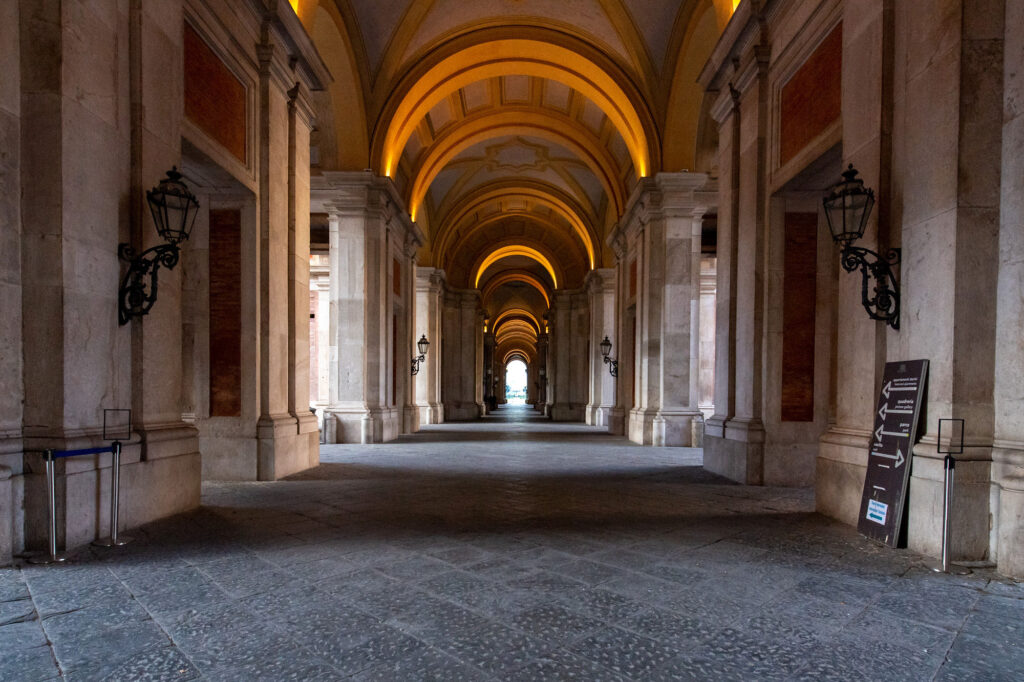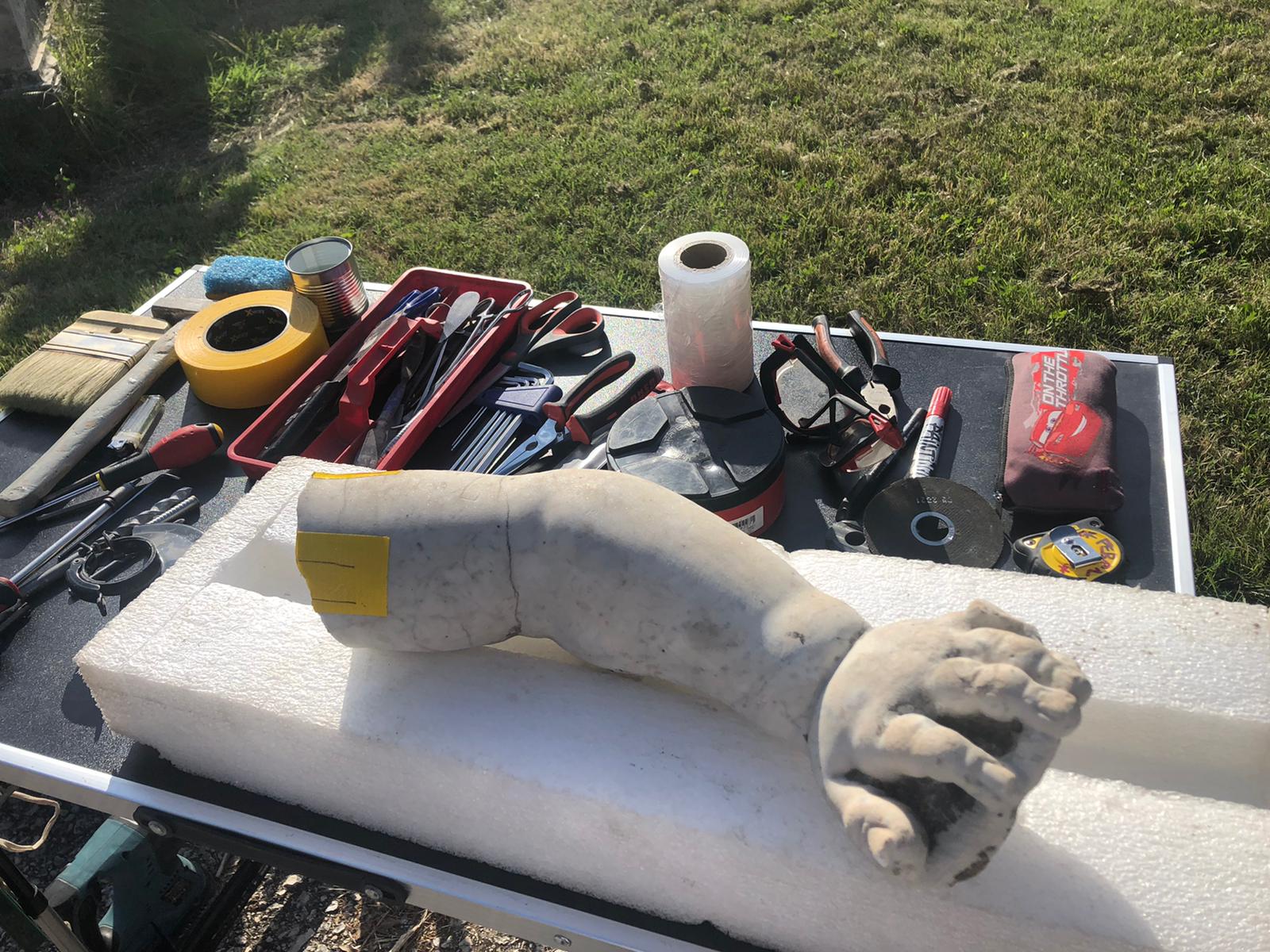
The Restoration Laboratories
Between conservation and restoration, consistent attention at the service of the Vanvitellian Complex’s cultural heritage
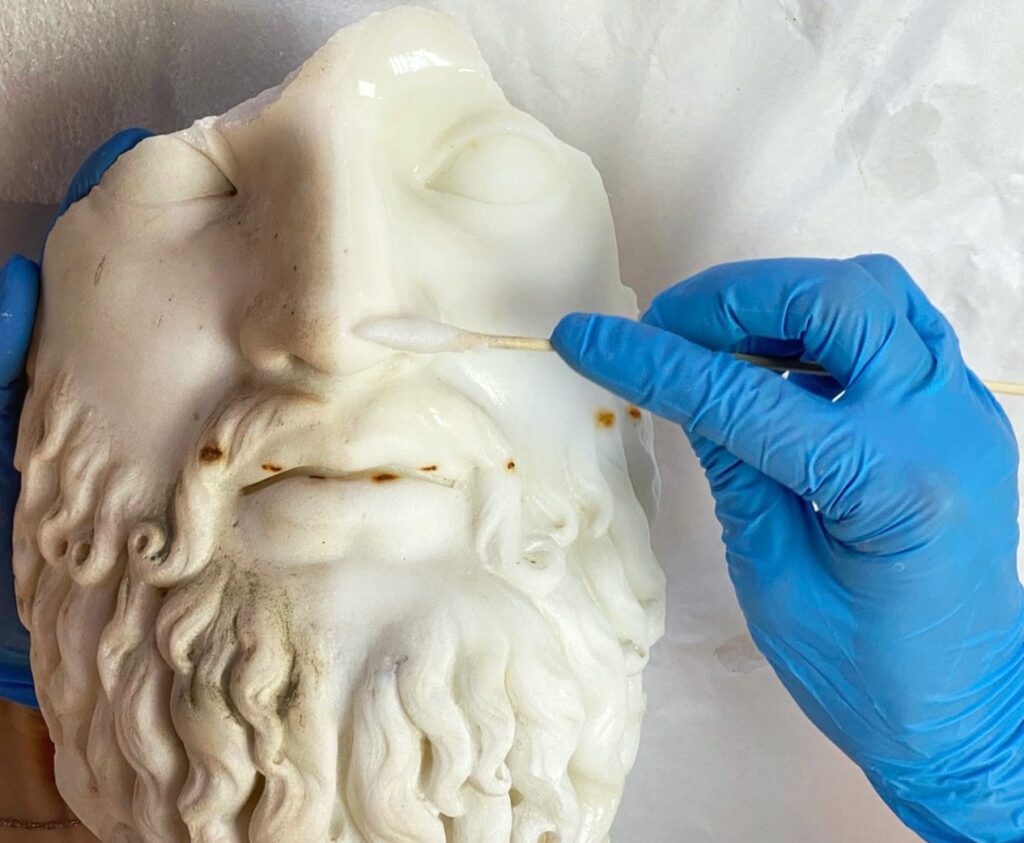
The heart of the Royal Palace’s activity lies in the protection, cataloguing, conservation, maintenance and restoration of the Vanvitellian Complex’s assets. The restoration laboratories of the Royal Palace of Caserta carry out the museum’s mission through highly specialized personnel.The laboratories carry out direct conservation activities on the patrimony of the Royal Palace of Caserta, guarantee the monitoring of the open construction sites and the periodic check-up on the state of conservation of the historical-artistic assets of the Complex. In addition to their routine activities, the restoration laboratories of the Royal Palace of Caserta carry out educational activities aimed at the public and schools. It is possible to visit the workshops by booking or on particular occasions. To stay updated, follow the news related to the Complex and the scheduled activities on our social networks and website, on the Initiatives page and on the News page.


 Discover more
Discover more

The Restoration Laboratory Of The Historical-Artistic Heritage
Managed by Dr. Anna Manzone – specialized in painted artifacts on wooden and textile support, carved wooden artifacts, furnishings and wooden structures, artifacts in processed, assembled and painted synthetic materials – the Restoration Laboratory of Historical-Artistic Assets carries out the conservation and protection of the Palace’s cultural heritage, as well as the collections of the Royal Park and the English Garden. The monitoring activities of the Vanvitellian Complex’s cultural heritage are flanked by scheduled maintenance, preventive conservation and restoration. In line with its educational mission, the Restoration Laboratory of Historical-Artistic Heritage of the Royal Palace of Caserta takes care of the communication relating to its activities and regularly hosts curricular internships, in partnership with Italian and foreign universities and higher education centres. The laboratory staff is also responsible for the reorganization of museum accumulations, according to new conservation standards, in line with ICCROM principles, and for the issuing of the Condition reports of the Royal Palace’s art works to be lent to external institutions.




Restoration Laboratory For Archival Heritage And Book Heritage
Managed by Dr. Gennaro Tortino – specialized in restoration interventions for book and archival material, paper and parchment artifacts, photographic, cinematographic and digital material – the Restoration Laboratory for Archival Heritage and Book Heritage is responsible for the maintenance, conservation and restoration of the documents kept at the Historical Archive and the Royal Palace of Caserta’s Palatine Library. In line with the museum’s mission, the laboratory also contributes to the protection of the artistic, book, archival, photographic and digital heritage of the Vanvitellian Complex. On the occasion of exhibitions and scientific events, the Restoration Laboratory for Archival and Book Heritage takes care of the display conditions of the paper material involved through a careful control of environmental parameters. Collaborating with universities and external bodies, the laboratory is regularly home to training internships and hosts educational activities for the public and schools.The Restoration Laboratory for Archival and Book Heritage also collaborates with the staff of the Photographic Laboratory and the Digitization Laboratory, following computerization and document storage procedures, in compliance with the rules of good conservation of documentary material in traditional and digital format.



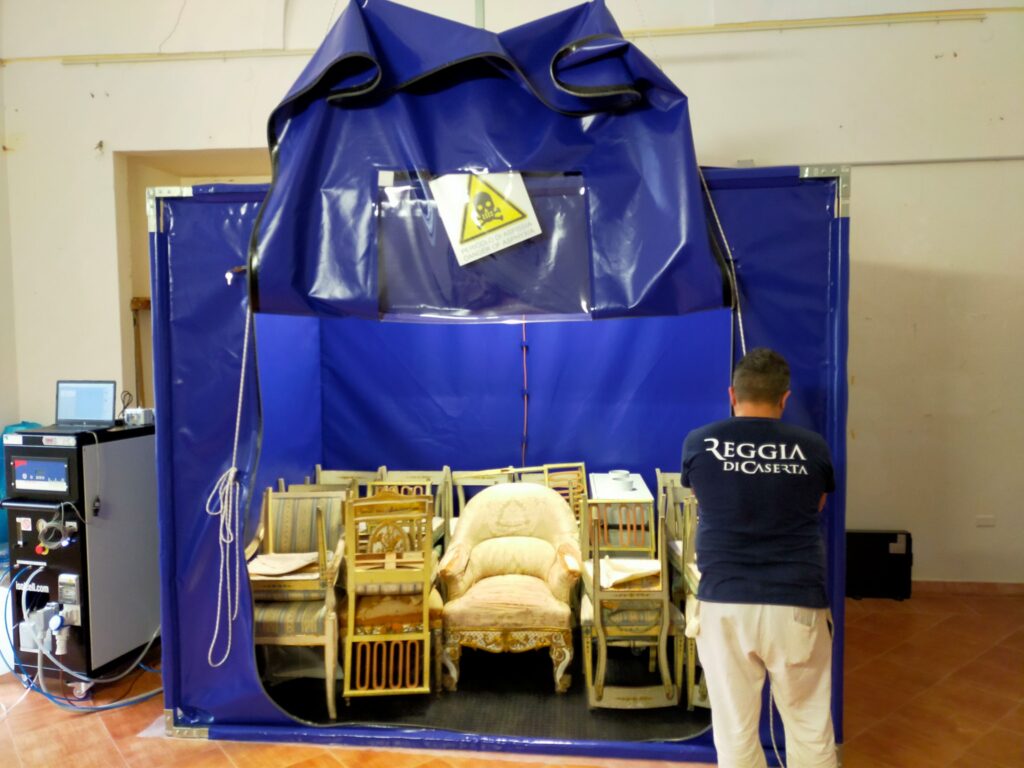
The deposits and the anoxic chamber
The Restoration Laboratory Service is the point of contact for the organisation, monitoring, management, consultation and valorisation of collection deposits.
The ongoing activity involves the rational organization of the collections present within the depots, based on the existing spaces and in the future forecast of functional reorganization. To date, the deposits contain various types of works, with different materials, functions, eras and typologies.
The reorganization of the works involves shared work with the Mobile Heritage Inventory and Catalog Service which has currently started an accurate survey of the historical inventories. Furthermore, a scheduled maintenance plan is active, initiated thanks to the purchase of a disinfestation chamber for works of art which works using an anoxic method, i.e. by removing oxygen in favor of nitrogen – an ecological alternative to the widely spread toxic-harmful systems. A disinfestation plan was created by drawing up specific lists, starting the cycle of all wooden and textile furnishings and continuing with other types of works that require intervention.



The Restoration Laboratory projects
Centrotavola del Sebeto con vedute dei Palazzi Reali di Napoli, Capodimonte e Caserta di Raffaele Giovine
Le opere all’interno dell’esposizione museale "Tutto torna! Nuove acquisizioni e restituzioni alle collezioni della Reggia di Caserta" inaugurata il 22 ottobre 2025 sono state interessate da interventi di manutenzione ordinaria, straordinaria e restauro, travolta da parte del personale del Museo e in altri casi da personale esterno, ed hanno previsto la progettazione e la direzione dei lavori della Reggia di Caserta.
Il centrotavola, opera polimaterica realizzata da Raffele Giovine nel 1848, rientra tra le restituzioni che il museo Reggia di Caserta ha avviato negli ultimi anni; infatti, anche se di proprietà della Reggia di Caserta, era esposto fino al 2024 al Palazzo Reale di Napoli, tornato in Museo dopo circa 70 anni.
La sua restituzione ed esposizione all’interno degli appartamenti reali del Museo ha permesso una valutazione conservativa da parte della direzione e, in occasione della mostra, un restauro che potesse liberare l’opera da copiosi strati di depositi coerenti ed incoerenti e una ossidazione accentuata degli elementi metallici che alteravano completamente la percezione del modellato, cromie, giochi di sfumature e diverse lavorazioni meccaniche dell’artista che erano occluse dal degrado.
I lavori di restauro sono stati eseguiti dalla ditta specializzata ANDREOZZI MAURIZIO Conservazione e restauro di opere d’arte e finanziati da fondi ordinari, sotto la Direzione dei Lavori del Funzionario Restauratore Conservatore Anna Manzone....
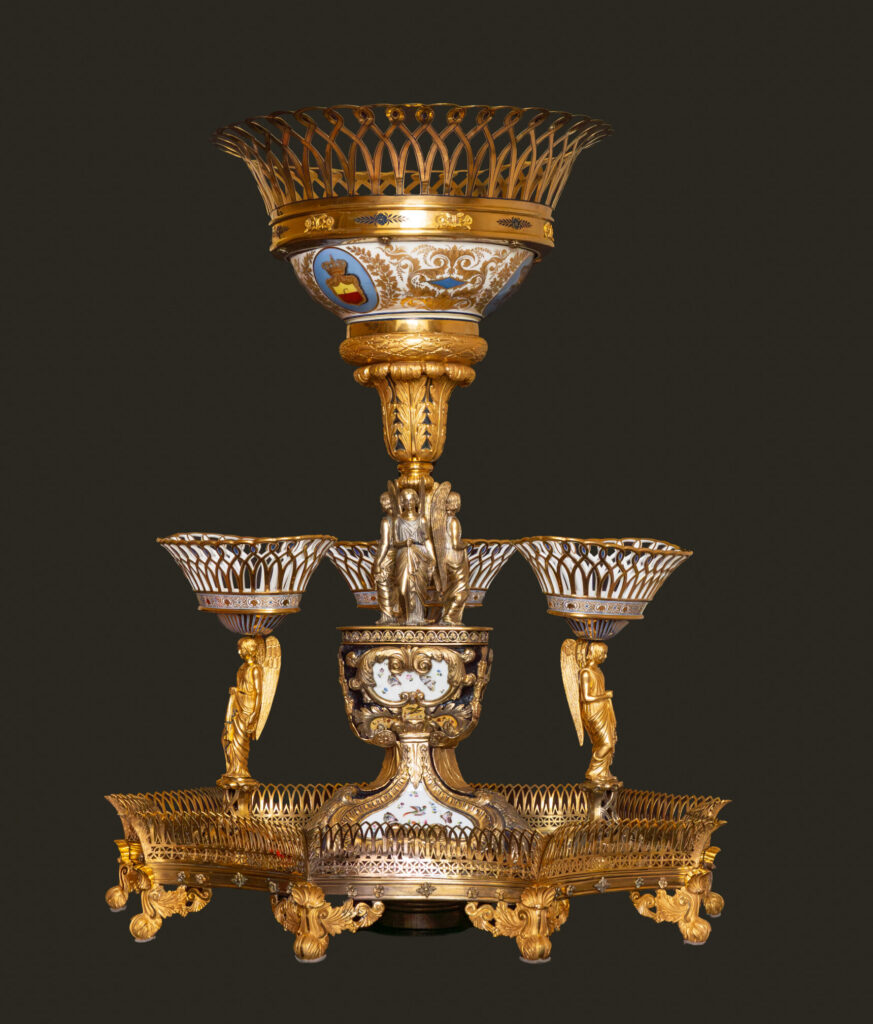
Intervento di restauro di tre dipinti su tela realizzati a soffitto nella Real Tenuta di San Silvestro
Nel mese di febbraio 2025 sono iniziati ad opera della Magistri s.r.l. gli interventi conservativi riguardanti i tre dipinti su tela a soffitto del Real Casino all'interno della Real Tenuta del Bosco di S. Silvestro. Si tratta delle tele policrome che decorano il soffitto della “Sala Gialla”, sala “Bacco e Arianna” e “Sala di Diana cacciatrice”, databili ai primi anni del XIX secolo. Le opere si presentavano in cattivo stato di conservazione, con perdita di funzionalità degli ancoraggi che le assicuravano alla struttura lignea delle volte, con ossidazione degli elementi e lacerazioni della tela in corrispondenza degli stessi: se nel caso della Sala Gialla e della Sala di Diana questo fenomeno di degrado era di gravità ancora contenuta, nella sala di Bacco e Arianna esso era progredito fino a causare il distacco quasi totale della tela a soffitto, ancorata unicamente nelle fasce perimetrali e deformata con spanciamento verso il suolo fino all’altezza di circa un metro e mezzo. Accanto a questo aspetto, si riscontravano anche gore di umidità, alterazione cromatica delle superfici pittoriche, distacchi di preparazione e pellicola pittorica, lacune, lacerazioni e strappi. Si è deciso di svolgere l’intervento conservativo sulle due tele ancora adese al soffitto direttamente in loco, senza rimuoverle dal proprio telaio; la tela di Bacco e Arianna, invece, è stata sottoposta a smontaggio e movimentazione in un laboratorio esterno e verrà ricollocata al termine dell’intervento. Soffermandosi su quest’ultima, si è quindi innanzitutto effettuato un preconsolidamento della tela ed un fissaggio della pellicola pittorica tramite applicazione a pennello di mentolo, un alcool estratto dagli oli essenziali della menta con leggere capacità adesive e caratteristica di sublimazione. Durante la fase di smontaggio, è stato possibile studiare la tela di Bacco e Arianna: si è così ipotizzato che essa sia stata composta a partire da diverse porzioni di tela ancorate al telaio a soffitto, poi cucite l’una con l’altra, e infine dipinta quando si trovava già in opera. Si è così scelto di suddividere il dipinto in sezioni per il trasporto, seguendo le stesse cuciture proprie dell’opera. Si è così posizionato un telo protettivo, fissato al perimetro della sala tramite tasselli rimovibili e alzato e abbassato tramite un sistema di carrucole e contrappesi; esso è stato sollevato fino ad accostarsi alla superficie della tela così da darvi sostegno, mentre gli operatori specializzati procedevano con il taglio delle sezioni individuate. Ciascuna porzione è stata calata con discesa lenta e controllata a terra, dove erano stati posizionati teli a protezione e isolamento tra pavimento e dipinto. Si è quindi effettuata una pulitura a secco del retro della tela mediante pennellesse e aspiratori, onde rimuovere la maggior parte dell’ingente deposito incoerente di polvere, particellato vario e guano, quindi si è proseguito con l’arrotolamento delle diverse sezioni di dipinti con l’ausilio di rulli mobili di dimensioni adatte, interponendo tra il rullo e la tela a protezione di quest’ultima teli di tessuto-non-tessuto e film di poliestere monosiliconato. I dipinti così preparati sono stati affidati a un’impresa specializzata nella movimentazione delle opere d’arte e trasportati nel laboratorio della Magistri s.r.l., dove è in corso la fase di studio dell’opera e di svolgimento di prove preliminari. Sono state svolte indagini diagnostiche conoscitive, svolte in concerto tra restauratori e diagnosti. In questo caso, si è deciso di eseguire la termografia dei due soffitti non soggetti a distacco, ovvero una indagine diagnostica non invasiva basata sull’acquisizione di immagini nell’infrarosso tramite termocamera; questa indagine, in fase di elaborazione, permetterà di verificare la morfologia e le componenti strutturali delle volte, così da avere una solida base oggettiva su cui mettere a punto con precisione gli interventi di riancoraggio. Per motivo simile si è scelto di eseguire prove di resistografia, ovvero un’indagine finalizzata a testare la consistenza del legno in vari punti delle volte delle tre sale. Sono inoltre stati prelevati tre microprelievi, scelti in punti significativi per il materiale ma non per la lettura dell’opera, per analizzare la tecnica esecutiva e materiali costitutivi dei tre dipinti....
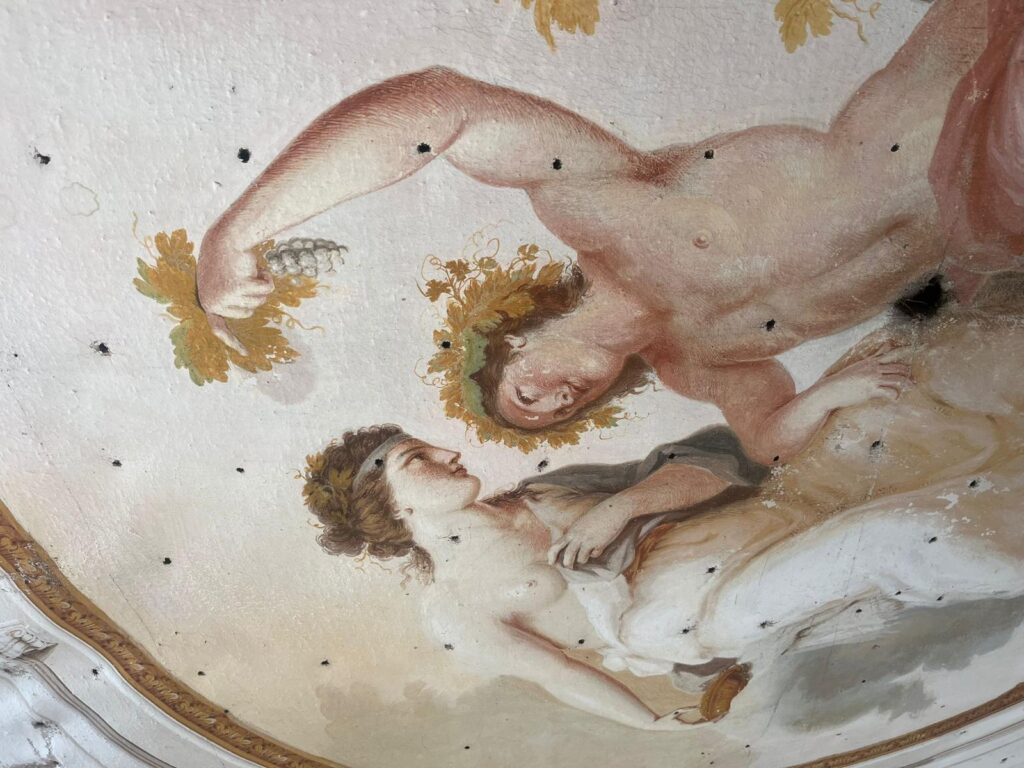
Gruppi scultorei della Fontana di Diana e Atteone
Il lavoro è stato svolto dall'impresa Fll.i Navarra, grazie al Fondo per l’arte dell'Associazione Soroptimist International Italia. Il club di Caserta ha vinto con il proprio progetto, redatto insieme al servizio Laboratori di Restauro della Reggia, sulle 22 proposte arrivate dai gruppi di tutta Italia, relative ad altrettanti siti. L’obiettivo è stato quello di procedere con prodotti ecocompatibili atti a non compromettere la vita di flora e fauna acquatica, eliminando le sostanze sovrapposte che non rendevano leggibile l'opera nella sua bellezza. Si è trattato di un restauro “green”, sia per la scelta dei prodotti utilizzati, sia per la presenza del bacino idrico della fontana attorno, decidendo di non svuotarla così da rispettare l’ecosistema delle specie acquatiche presenti e l’estetica del complesso monumentale. L’allestimento del cantiere ha previsto, quindi, il montaggio di piattaforme galleggianti in modo da permettere agli operatori di lavorare in sicurezza. L’opera, conosciuta anche come “il Bagno di Diana”, è collocata nella parte Nord del Parco Reale della Reggia di Caserta ed è l’ultima fontana monumentale a conclusione della grande “Via d’acqua”. Il tema rappresentato è tratto dalla mitologia greca e descritto nel terzo libro de “Le Metamorfosi” di Ovidio: il cacciatore Atteone, dopo essersi perso nel bosco, assiste al bagno della dea Diana e delle sue ninfe nella fonte Parteia. La dea, sorpresa dal cacciatore in un momento di grande intimità, adirata per l’accaduto trasforma Atteone in un cervo che viene sbranato dai suoi stessi cani....
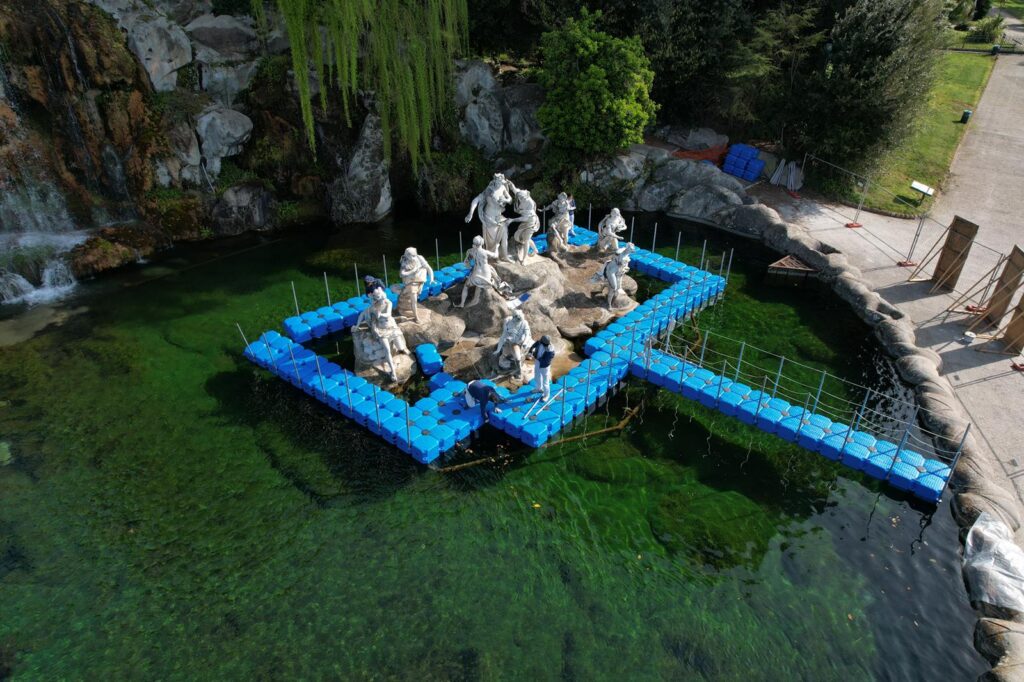
Statua del principe ereditario Carlo Tito di Borbone
Il manufatto, raffigurante il principe ereditario, il Real Infante Carlo Tito di Borbone, è stato conservato in uno dei depositi museali del museo della Reggia di Caserta. L’ambiente che lo ha ospitato per diversi anni è la cappella Pio IX, un piccolo spazio in cui l’opera si trovava poggiata ai piedi dell’altare. L’operazione di recupero, risistemazione, adeguamento e valorizzazione dei depositi che la direzione ha intrapreso con il servizio Laboratori di Restauro già dal 2020 ha interessato anche questo piccolo deposito, da cui è emersa la scultura. L’approccio all’opera è stato quello di un intervento “minimo”, volto a non stravolgere la visione della superficie semi lucida, data proprio dai protettivi utilizzati dall’artista e in precedenti interventi conservativi. Il criterio su cui si è basato l’intervento di restauro è stato quello di rimuovere tutte le sostanze sovrapposte che interferivano nella lettura della superficie, per spessore o per squilibrio cromatico, alleggerendo senza però eliminando del tutto le patine e le patinature con cui l’opera è arrivata a noi, ivi compresi i graffi superficiali diffusi....

Mapplethorpe
Robert Mapplethorpe's photographs are one of the most representative works of the Terrae Motus collection of the Royal Palace of Caserta. Dated 1983, the prints titled: Dennis Speight with thorus, Jack with crown, Skull and Crossbones, Jill Chapman, Dennis Speight with flowers, can be defined as sculptures of light. Widely exemplary of the American photographer’s style, he was himself a member of that group of artists which included some of the most eminent figures on the international scene of the time, close to the well-known Neapolitan gallery owner Lucio Amelio. The restoration, carried out at the Royal Palace of Caserta by Sandra Maria Petrillo’s SMP Photo Conservation Studio, (a professional with decades of experience in the conservation and restoration of historical photographic works) involved among the various interventions, the use of disinfection techniques both of the supports and of the photographic emulsion layer of the prints, whose integrity has been partially compromised by microbial attacks. In particular for the Skull and Crossbones, the most damaged of the five, the disinfection intervention was carried out through the use of a "solvent chamber". At the end of the intervention, the photographs were reconditioned to be re-exhibited together with the other works of Terrae Motus. This restoration constituted an important moment of reflection and study on the methodologies to be used in the conservation and planned maintenance of photographic assets....
